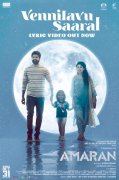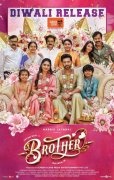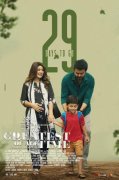During the festival the household worships Lord Ganesha idols for an odd number of days(from 1 to 11 days, sometimes 13). The main sweet-dish during the festival is modak, also known as modagam (kozhakottai) in South India. On Ananta Chaturdashi day, the idols of Ganesha are taken from various pandals, doorsteps, localities and puja rooms for a truly royal ride. Folks carry the idols to the local river or tank for the visarjan ceremony.
Pongal : Pongal is the harvest festival of Tamilnadu. Pongal falls in the mid-January every year and marks the auspicious beginning of Uttarayan - sun's journey northwards. The festival is celebrated four days from the last day of the Tamil month Maargazhi (December - January) to the third day of Thai (January - February).
The first day is Bhogi. It is celebrated by throwing away and destroying old clothes and materials, by setting them on fire, marking the end of the old Thai and the emergence of the new Thai. The second day of Pongal is the main day, that is 'Veetu Pongal', which is celebrated by boiling rice with fresh milk and jaggery in new pots, which are later topped with brown sugar, cashew nuts and raisins and allowing it to boil over the vessel. The third day, Maattu Pongal, is for offering thanks to cattle, as they help farmer in different ways for agriculture. The final day is Kaanum Pongal. People visit their friends, relatives and families. They also chew sugar cane and decorate their houses with kolam.
Onam : Onam is the harvest fetival of Kerala. Onam is celebrated in the Malayalam month 'Chingam' (Aug - Sep). It is celebrated for 10 days. The most important day is 'Thiruvonam'. On this
day people wear new clothes and prepare feasts. "Pookkalam" is made in every house for all the ten days of Onam. Elaborate procession of Trichur and spectacular snake boat races on River Pampa mark the merry-making nature of the festival. Thousands of tourists visit Kerala during the festival.
Holi : Holi is a popular spring festival celebrated in India. It is also called the "Festival of Colours". On this day, people hug and wish each other 'Happy Holi'. On the first day, bonfires are lit at night to signify burning Holika. On the second day, known as Dhulandi, people spend the day throwing coloured powder and water at each other. Rangapanchami occurs a few days later on a Panchami (fifth day of the full moon), marking the end of festivities involving colours.
Mahashivaratri : Mahashivaratri (also called Shiva Ratri) is the Great Festival of Shiva. Mahashivaratri is especially important to Saivites (devotees of Shiva), but it is celebrated by most Hindus. People repeat the Panchakshara Mantra 'Om Nava Shivaya". He who utters the Names of Shiva during Shivaratri, with perfect devotion and concentration, is freed from all sins. He reaches the abode of Shiva and lives there happily. Many pilgrims flock to the places where there are Shiva temples.
Janmashtami : Krishna Janmashtami (Janmashtami) is a Hindu festival celebrating the birth of Krishna, the eighth avatar (incarnation) of Vishnu. Krishna Janmashtami is observed on the eighth day of the dark half (Krishna Paksha) of the month of Bhadrapada in the Hindu calendar, when the Rohini Nakshatram is ascendent. Lord Krishna was born at the midnight, hence the celebrations also start in the midnight. The story about Lord Krishna'a birth is being told and then the idol of Krishna in his childhood is worshiped. The cultural aspects are represented by the traditionally dressed devotees. The raas or dance is also done with devotees taking part with spiritual fervor.
 Amaran
Amaran Brother
Brother Lucky Baskhar
Lucky Baskhar Vettaiyan
Vettaiyan Meiyazhagan
Meiyazhagan Thangalaan
Thangalaan The Greatest Of All Time
The Greatest Of All Time Mazhai Pidikkatha Manithan
Mazhai Pidikkatha Manithan